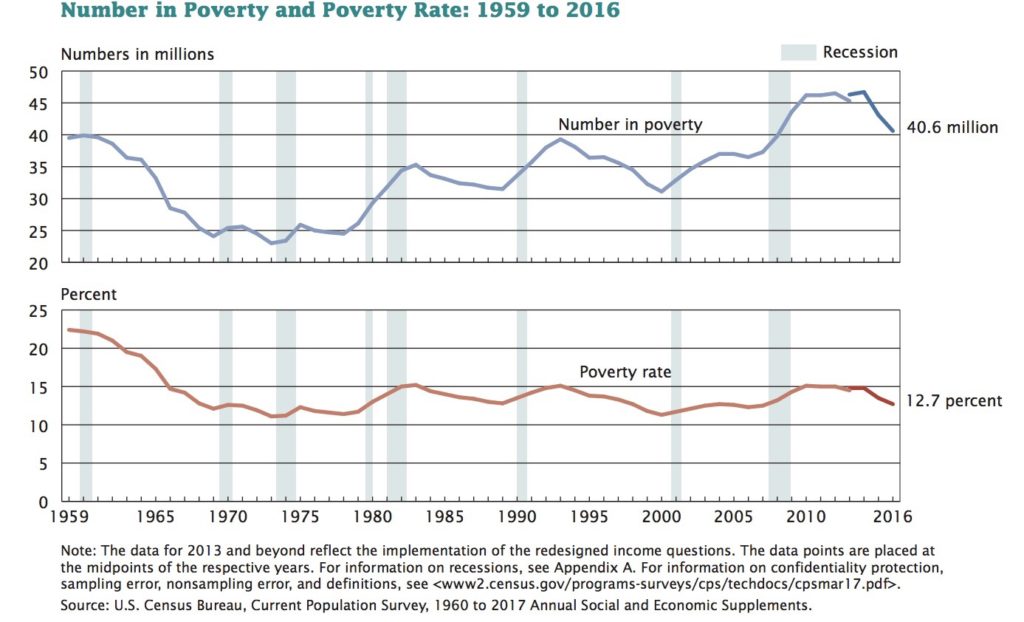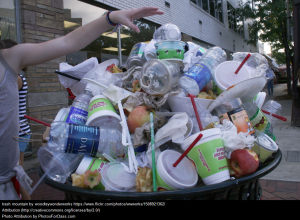The data released by the Census Bureau in the income, poverty, and health insurance report on September 12 seem to portray a healthier U.S. economy.
In fact, the annual report shows that the median household income rose by 3.2% from $57,200 in 2015 to $59,039 in 2016, and that the percentage of people living in poverty decreased in 2016 by 0.8% from the rate registered in 2015. Additionally, the data reveal a drop in the percentage of people without health insurance coverage: the value registered in 2016 was 8.8%, 0.3% less than the value registered in 2015 (Reuters).
Overall the quality of life in the United States seems to be improving and this means that the growth that the country has seen since the recession in things like the stock market, is at least to a certain extent also starting to show in households (Marketplace). Yet, skepticism lingers over the data shown in the report.
Considering other measures could help to better understand why the U.S. still has much to do to repair its economy.
The report by the Census Bureau reveals that the income inequality rate is not decreasing: there are still huge divisions in incomes because of people’s gender, race and age. Moreover, inequality between Americans is growing (The New York Times).
In addition to income inequality, there is another measure that we should take into account: supplementary poverty. As pointed out by Forbes, unlike the poverty rate, supplementary poverty considers many of the government programs designed to assist low income families and individuals that are not included in the official poverty measure. Therefore, it shows that there are many families above the official poverty level that are actually receiving government aids.
This is one of the aspects that shows there are still many open questions about how economists should measure the poverty level and what values to take into account. Despite a rise in median household income, there are a lot of people who still feel «economic frustration», because there are different factors that influence people’s wages and economic opportunities, like for example the place where they live (Marketplace).
Beside these measures, also the number of health insurance coverages raises skepticism among the experts.
Even though the percentage of householders having insurance coverage increased, a breakdown of these data could reveal a different story.
If we look at people with income at or below the poverty level, we can see that 16.3% of them lack insurance coverage: «these are people who can least afford to take on medical debt» (Forbes). This percentage is quite remarkable when compared with the 4.6% of householders above the poverty level living without insurance coverage.
Despite these issues, it seems that the U.S. economy is improving overall. This element matters a lot, since President Donald Trump has announced that he wants to reform the current tax system and cut government spending. Democrats, considering the economic improvements shown in the Census Bureau’s report, «now have more ammunition to argue that the changes Mr. Trump seeks would mess with the success » (The New York Times).
The Federal Reserve is also paying close attention to the data released by the Census Bureau and to the current status of the U.S. economy. In fact, Janet L. Yellen, the Federal Reserve chairwoman, is expected to end the Fed’s lenient monetary policy in a meeting scheduled this week; the changes that will be following could affect the current improving U.S. economy.
Yet, whatever effect the new monetary policy will have on the economy, the increase in household income and the drop in the poverty rate is a reflection of the higher number of people back in the work force and of the 2.2 million of jobs added over the past year. The growth in the number of working people is «a vivid illustration of the old maxim that a job is the best antipoverty program » (The New York Times).



